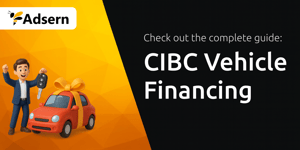
In an era of mounting consumer obligations, more Americans are turning to personal loans as a pathway to simplified repayment and greater financial control. With total personal loan debt reaching $253 billion in early 2025, the appeal of refinancing and consolidating balances has never been stronger.
Whether you carry multiple high-interest credit cards or small installment plans, combining those balances into one manageable payment can be a game changer. This article explores the statistics, the process, and the practical tips you need to navigate debt consolidation with confidence.
Debt consolidation isn’t a new concept, but its popularity has surged in recent years. Nearly 49% of personal loan borrowers now use funds specifically to refinance existing balances, with 38.3% focused on general debt consolidation and 10.5% targeting credit card debt.
On average, debt consolidation loans in May 2025 amounted to $27,293, reflecting both the scale of consumer obligations and lenders’ willingness to finance meaningful balances. As credit card debt exceeds $1.18 trillion, unlocking the power of consolidation becomes essential for many households.
A debt consolidation personal loan replaces multiple existing debts with a single installment loan. Borrowers apply based on credit score, income, and employment history. Approved loans often arrive within one to two business days, offering rapid relief.
Key steps include:
Once the consolidation loan disburses, you make one monthly payment over a set term—typically two to seven years—at a fixed APR, which may be significantly lower than your previous interest charges.
Selecting the right lender is critical. Below is a snapshot of leading providers, their APR ranges, loan amounts, and the borrowers they serve best.
Credit unions like NASA Federal and First Tech also provide competitive terms for members, often with fewer fees and more personalized service. When comparing, remember to factor in origination fees—which can range from 0% to 9.99%—and the absence of prepayment penalties at most institutions.
Understanding true costs is paramount. Average APRs for debt consolidation loans hover at 18.34%, but borrowers with excellent credit can secure rates as low as 5.99%. Mid-tier scores face APRs near 14.98%, while fair credit yields rates above 21%.
Loan terms typically span two to seven years, influencing both monthly payment size and total interest paid. Shorter terms mean higher payments but less interest overall, whereas longer terms reduce monthly obligations at the cost of increased interest over time.
Fees, although less common than in prior years, still apply. Origination charges can impact your net proceeds, so always:
Debt consolidation doesn’t erase obligations—it restructures them. Success depends on disciplined budgeting, responsible credit use, and continuous monitoring of progress toward repayment.
Consolidation is only a tool, not a cure. To ensure lasting relief, consider these strategies:
Combining a structured repayment plan with mindful financial habits can lead to potential for financial freedom and a more secure future.
Approval hinges on several factors:
Credit score and history: Excellent credit unlocks the lowest APRs. Borrowers with scores above 720 often secure rates below 14%.
Income and employment: Stable income reduces lender risk. Providing proof of regular earnings accelerates approval.
Debt-to-income ratio: A lower ratio signifies capacity to repay. Aim for below 36% for ideal terms.
Loan amount and term: Larger loans or longer terms may attract higher APRs. Balance your need for cash with the desire for affordable payments.
Fintech platforms continue transforming the market by offering streamlined digital applications, rapid funding, and transparent pricing. Although origination volumes have leveled since 2022’s peak, total balances persistently climb, driven by borrowers with good-to-excellent credit.
Macro factors, including Federal Reserve rate decisions, will influence APRs moving forward. Yet delinquency rates remain subdued—under 4%—signaling that borrowers are managing these obligations responsibly.
As you evaluate your options, remember that consolidation is one piece of a larger financial puzzle. By combining informed lender selection, disciplined repayment, and long-term planning, you can harness potential for sustainable debt relief and chart a course toward true economic stability.
Take the first step today: assess your debt, research your options, and commit to a repayment plan that aligns with your goals. Your journey to financial renewal starts here.
References













